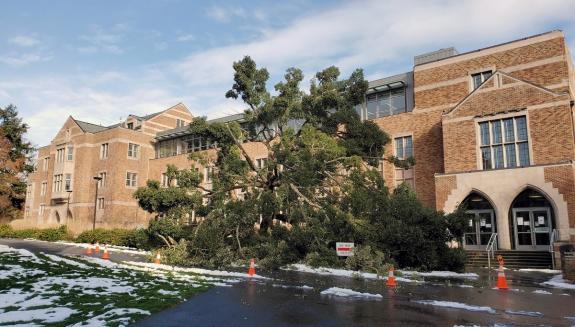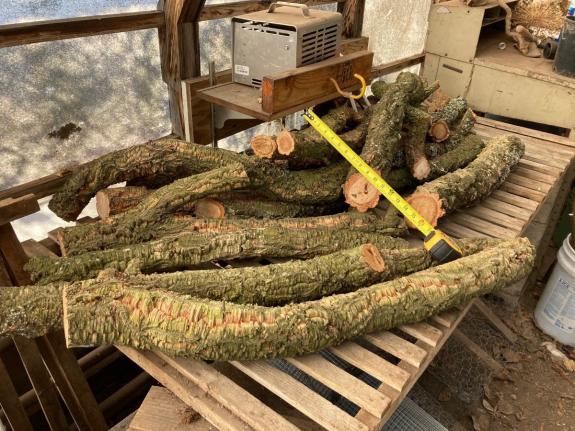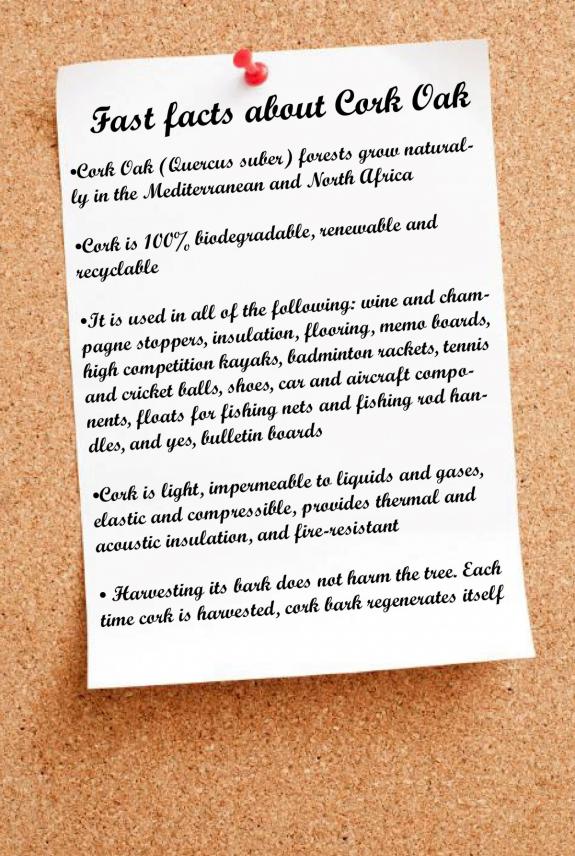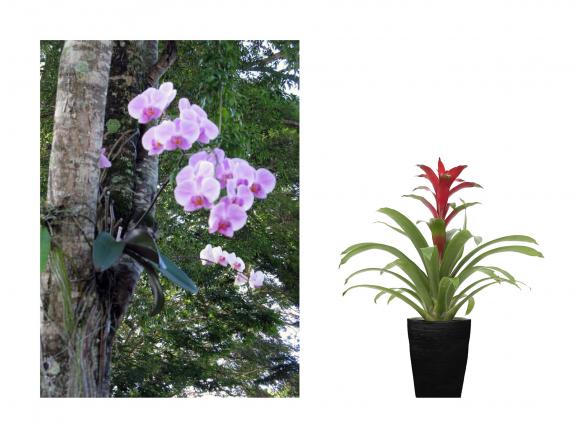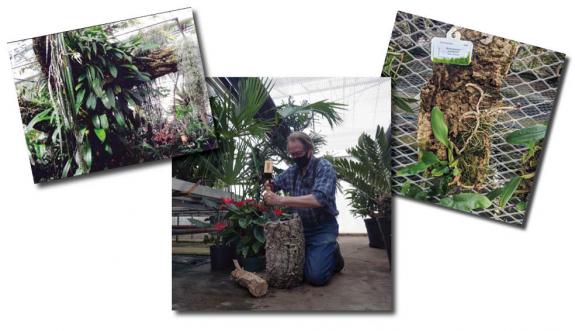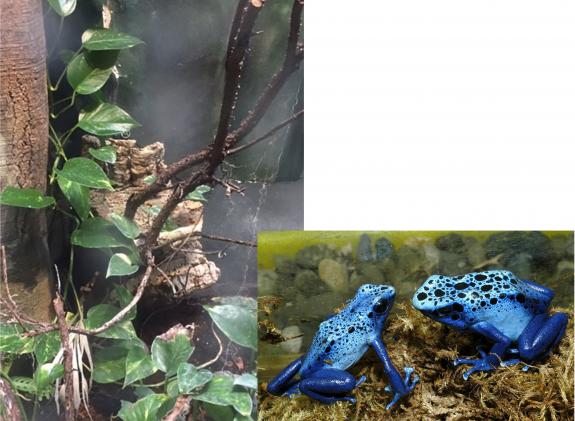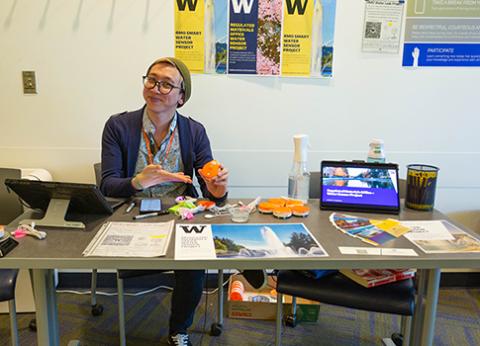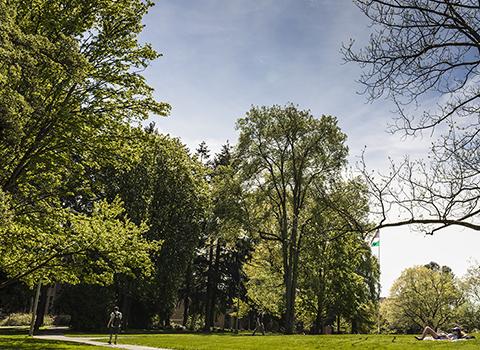Treasured fallen oak gets new life

Put a cork in it
Put a cork in it
When the HUB was remodeled over a decade ago, great care was taken to preserve a cork oak tree that stood outside the building’s southwest corner. It’s rare for such a tree to grow so well in this climate, and judging by its height, it was at least 60 years old. So it was with much sadness when UW Facilities grounds crew members discovered the tree laying on its side, a victim of February’s heavy snowstorm.
Unlike many other oak varieties, cork oak, Quercus suber, is an evergreen, and this quality was its downfall: the weight of this year’s snow on its fully-leaved branches proved to be too much for the tree to bear.
“When we get heavy snow, there are some trees on campus like Deodar cedars and pines that tend to get a lot of breakage, so while it was not entirely surprising to see this tree go, it’s definitely a shame,” says Norm Kwasinski, a Grounds supervisor.
But this tree — the only one of its kind on the UW campus — possesses another quality, its cork, that will ensure it will live on in many forms after it is harvested with help from gardeners to heavy equipment operators and beyond.
That’s because after parts of the tree were safely removed and transported to carpenters in the UW Salvage Wood program, where its wood will be made into benches and other items, much of the tree’s bark, or phellem, will be sculpted and made into displays by the Life Sciences Greenhouse and Woodland Park Zoo.
Cork trees are a sustainable and renewable timber product, especially in their native Mediterranean habitat, where they’re also valuable economically. Harvesting the bark does not harm the tree as the bark regenerates itself so that, over the course of a typical 200-year lifespan, trees can be harvested at least 10 times.
Teaching material
Teaching material
While many of us think of wine stoppers, bulletin boards, flooring and perhaps sandals when we think of cork, this natural resource is relished by many other professional crafts people.
Doug Ewing is one of those people. Ewing, a horticulturalist, botanist and interim manager of the UW Life Sciences Greenhouse, will be sculpting and piecing together pieces of the fallen tree to mount on wire walls in the greenhouse. He’ll then use them to “plant” some of the UW’s orchids, ferns, air plants, succulents and other tropical species that are awaiting transfer from a temporary greenhouse facility in Redmond to the nearly-completed greenhouse in the Life Sciences Complex.
If you ever stepped foot in the old UW Botany Greenhouse before it was taken down, you’ve undoubtedly seen Ewing’s work. When the same cork oak tree outside the HUB lost some branches in a windstorm about 25 years ago, Ewing collected and used them to create plant displays.
“Doug is an artist with cork oak bark and chisels away at it to make cool things,” says Sara Shores, an urban forest specialist with UW Facilities.
Shores is referring to how Ewing uses wood and bark to display tropical plants such as orchids just as they would be seen in nature, growing on the sides of trees.
The UW’s collection of orchids includes about 2,000 species and Ewing believes it’s one of the largest and best teaching collections in the world. Many plants in the collection were grown from seed by Ewing. He says that orchids are air-rooters and as cork is porous, it’s easy for orchids to cling to the bark. They grow naturally on the trunks and branches of other trees.
“Every plant has a story and I like to tell the story when I’m holding the live, living plant in my hands while telling that story to students. It resonates more with them when they learn this way,” Ewing says. “When you can tell the story behind a plant, that’s when it becomes a powerful thing.”
The tree lives on
The tree lives on
Other beneficiaries of the fallen tree will be amphibians like snakes and frogs at Seattle’s Woodland Park Zoo. The zoo has previously used commercially-purchased cork oak bark in its exhibits.
Ewing adds that while the tree, while living, was a magnificent specimen, everyone’s trying to make the best of it now and show how this ‘windfall’ will benefit people at the UW and the Woodland Park Zoo.
Back at the HUB, the good news is that there’s a five-foot tall “volunteer” cork oak that has quietly been growing in the fallen tree’s shadow. Botanists call the phenomenon of seedlings establishing themselves beneath adult plants as nurse-protégé interactions. The seedlings benefit from the micro-environment created by adult plants with no effect for the latter. Kwasinski says grounds staff will work at removing as much of the stump so that its protégé will have room to grow.
“It’s still there even though it’s not,” Kwasinski muses.
How to recycle cork
While cork is recyclable, it’s not accepted in mixed recycling bins at the UW since it’s such a specialized material and typically small. Cork stoppers can be recycled through the Cork ReHarvest Program, which has drop-off locations at PCC, Whole Foods Markets, and Wine World Warehouses. Recork.org also takes cork stoppers.
